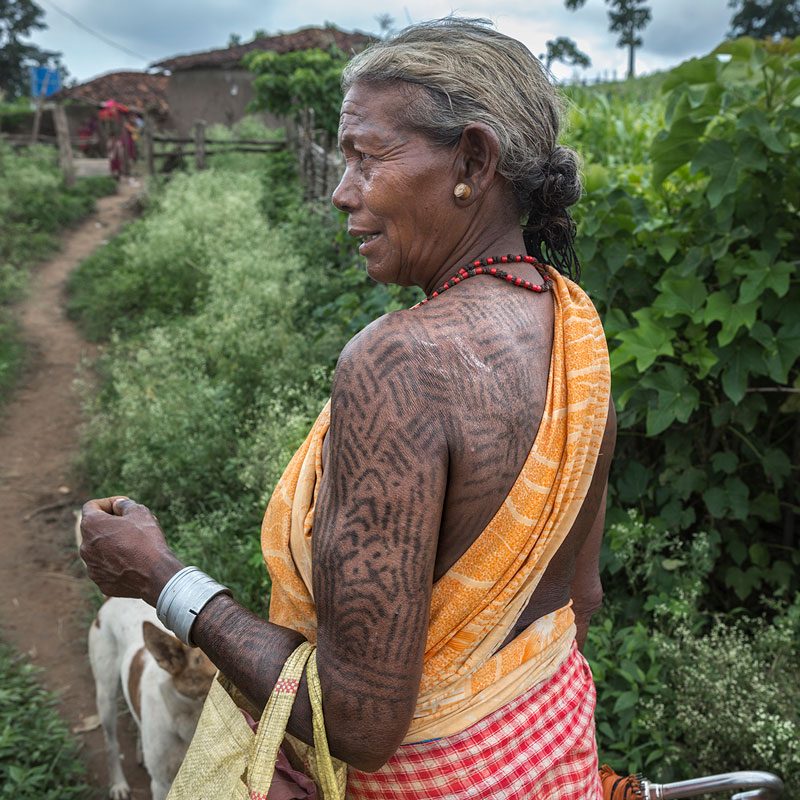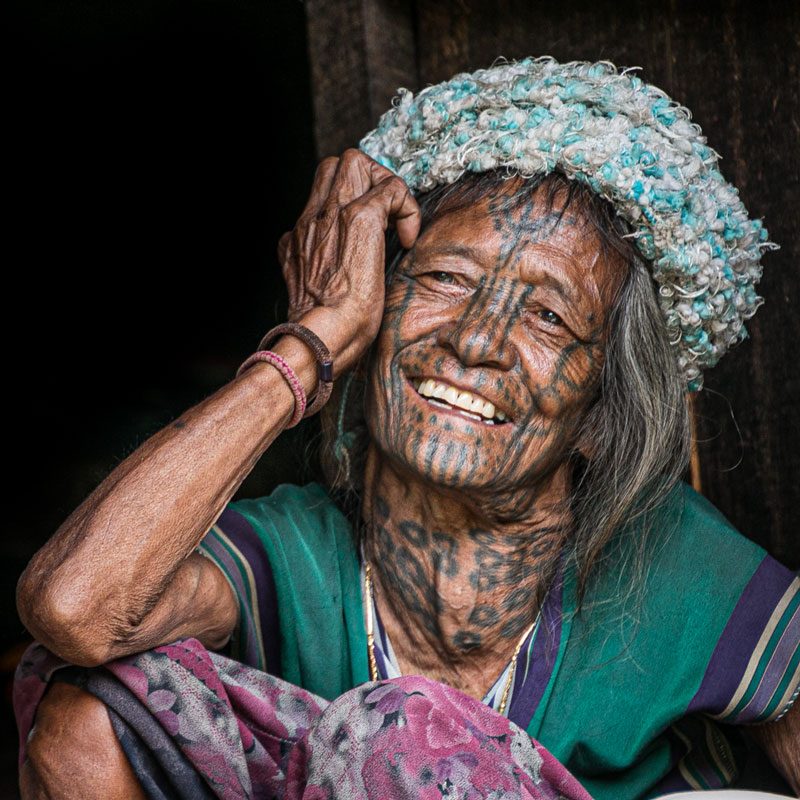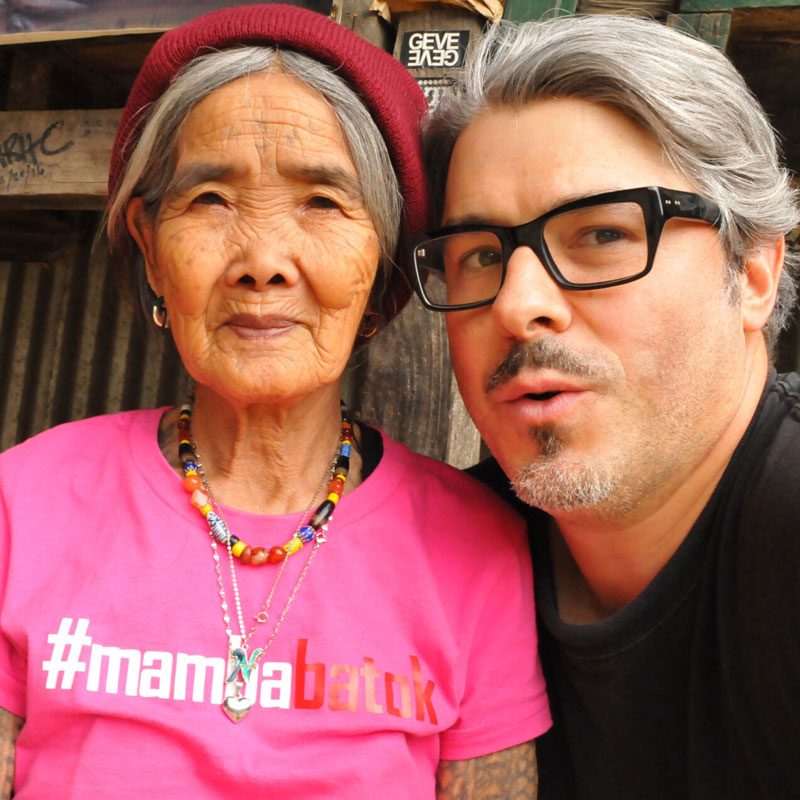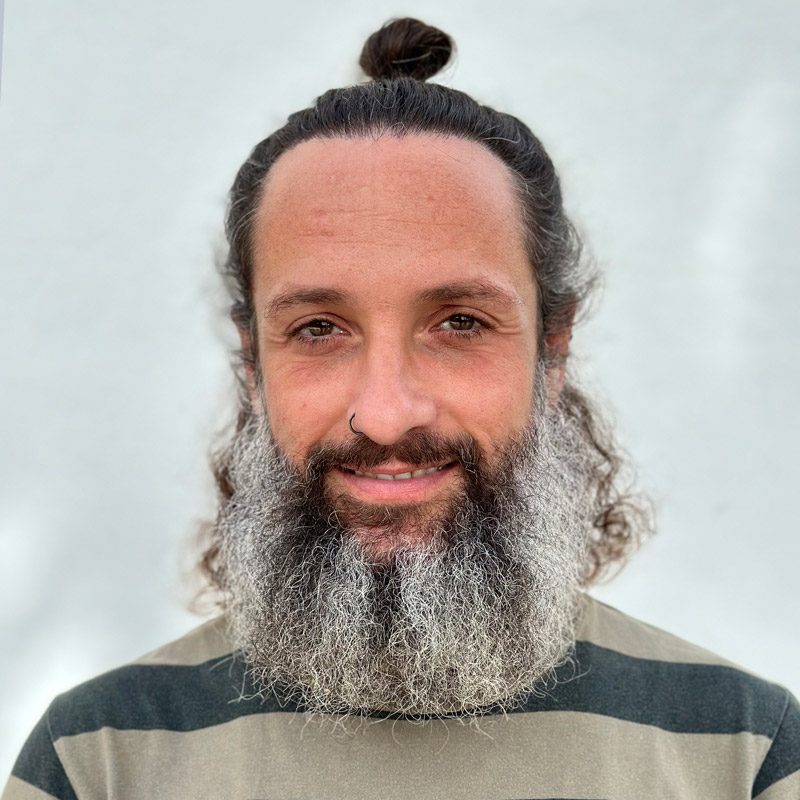In sub-Saharan Africa, scarifications are combined with tattoos, for reasons of ethnic differentiation, in Chad —Mbororo ethnic group. In Senegal or Malí, In Senegal or Mali, for aesthetic reasons, women of this same ethnic group have the tradition of tattooing their lips (both internally and externally). They are made using small wooden needles and powdered charcoal. In other places in Africa —such as Benín— full-torso tattoos are often associated with voodoo religious rituals.
On the other hand, in Asia, in the remote areas of Myanmar and Thailand, some animistic hill tribes have the custom of tattooing. Women, upon reaching adulthood, should be facially tattooed. It is believed that when they die, if they do not have their face tattooed, they cannot enter paradise.
To deepen this cultural question, we have been able to speak with Lars Krutak, PhD in Cultural Anthropology from the University of Arizona (Department of Human Evolution and Social Change). He is the author of several publications, has worked for several years at theNational Museum of the American Indian, has hosted the Tattoo Hunter program on the Discovery Channel, and is responsible for content on social anthropology in various National Geographic documentaries.

Mbororo woman with tattooed face, Chad
Aníbal Bueno— It is known that linguistics and philology study and organize different languages by the way in which they evolve. Experts in these areas are even able to create an "evolutionary tree" of the world's languages. You once said that a tribal tattoo is “visual language”. With this in mind, do you think there is something similar related to tribal tattoo culture? Do you think there is a way to study its evolution?
Lars Krutak— There is no easy way to answer this question, because the oldest firm evidence we have for the existence of tattoos is from the mummified remains of an individual only 5,300 years old. In terms of evolutionary time, this is a drop in the ocean. There are thousands of older objects found archaeologically, of which - although they may be related to tattooing - we cannot be absolutely certain if their use was related to tattooing, scarification or body painting. I believe, however,that tattooing has been a human practice ever since people began to permanently mark their life events and achievements with it. In this sense, the tattoo is a visual language of the skin if you know how to read it. This is because tattoos convey a vast array of information about who we are, where we came from, our desires and fears, and who we aspire to be.

Woman of the Mbororo ethnic group with externally tattooed lips, Mali
Aníbal Bueno— We know that people from different indigenous cultures may have different reasons for getting tattooed. These reasons can be: religious, medical, ornamental, hierarchy, related to lineage or identity, and even as a way of narrating battles. What is the strangest or most fascinating reason that you have come across to justify a tattoo?
Lars Krutak— I have documented all the types of tattoos you talk about in your question. You've even mentioned the religious nature of some tattoos, but to be more specific, many of the ones I've come across have thefunctionality to repel evil spirits. These entities were greatly feared because they were believed to bring death or illness to individuals, families, or entire communities. To repel these evil beings, special tattoos were created, sometimes with the help of a shaman. But the power of these tattoos was not necessarily associated with the design itself. This is because these magical tattoos were commonly empowered through the use of magical pigments or spells applied directly to the pigments.. In other cases, particular deities or spirits were invoked to provide protection to the bearer of the tattoo.

Woman with tattooed torso for religious reasons associated with the voodoo religion, Benin
Aníbal Bueno— There are various tattooing techniques that are currently carried out around the world. Aquí, en Europa, tenemos las máquinas de tatuar eléctricas habituales. As you well know, in San Lorenzo, tattoo artists use a needle and thread. In Southeast Asia, bamboo cane is commonly used. In Africa, Fulani lip tattoos are usually carried out using a set of wooden needles. What other mechanisms do you know?
Lars Krutak— Throughout Southeast Asia and Oceania (Polynesia), hand tattooing is largely the norm. The technique has been practiced for over a thousand years and requires the use of a mallet to hit a small stick that either contains a bunch of needles or a comb with many teeth at the end.
Among the Maori in New Zealand there was a time when they practiced a form of tattooing in which they used a chisel-like tool that was struck with a hammer. Tattoo patterns were essentially carved on the body and face.
Many tribes also practice a form of scarification tattooing in which the skin is first cut with a lancet or knife; Subsequently, the tattoo pigment is rubbed into the open wound to create the indelible tattoo. This technique was widely practiced in Africa, but some tribal cultures in Asia also applied it.

Baiga woman with tattooed back, Madhya Pradesh state, India
Aníbal Bueno— As you often point out, indigenous tattoo cultures are disappearing day by day. Could you make a list of places where this is happening or about to happen?
Lars Krutak— The tattoos of the various Naga tribes (Nagaland and Arunachal Pradesh, India and northwestern Myanmar); Mentawai (Siberut Island, Indonesia); Kayan, Kenyah, Sab'an, Lahanan, and Sihan from Sarawak (Malay Borneo); Drung and Li (China); many tribes from the Amazon (Matsés, Juma); Berbers and Bedouins (North Africa), and the Kurds among many others.
Muun woman with tattooed face, Chin State, Myanmar

Aníbal Bueno— This question is very specific and has to do with facial tattoos in Chin State (Myanmar). Animist women in this area used to tattoo their faces to ensure access to paradise, according to their beliefs. It seems that today the Government has prohibited this practice. What do you know about this situation? Could you explain it in more depth?
Lars Krutak— Tattoo in Chin state were “officially” banned in the 1960s by the then socialist regime. Then Christian and Buddhist missionaries came and began converting the animist communities in the Chin state and the tattoos began to fade.. In any case, several remote communities in Chin State continued to tattoo young women until the past decade.
But the function of tattoos in the Chin state is not what you say! It was a sign that the girl had reached maturity and was ready for adult roles such as getting married, running the house, and raising children. Facial tattoos also highlighted the beauty of the woman, especially since these tattoos were tailored to fit and enhance the wearer's facial features. Additionally, facial tattoos were ethnic markers and although the basic patterns are very similar in certain Chin tribes, small variations in the overall patterns served to distinguish the particular clan to which the woman belonged.
As Chin tattoo erudite Jens Uwe Parkitny, wrote: “Each clan had its own seal and it was a taboo for a clan to copy another clan's seal…because that would have meant war.” Other tattoos located on the body were therapeutic.
Whang-Od, the last Kalinga tattoo artist (Philippines) together with Lars Krutak.

Krutak is active blogging, lecturing, and writing books on tattooing and anthropology. You can follow all his activity as well as acquire his fantastic work on tattoos through his website www.larskrutak.com
Photographs by Aníbal Bueno and Ana Robles. You can discover the work of Ana Robles in her:
Web | Instagram
You can discover the work of Aníbal Bueno in his:
Web | Instagram
